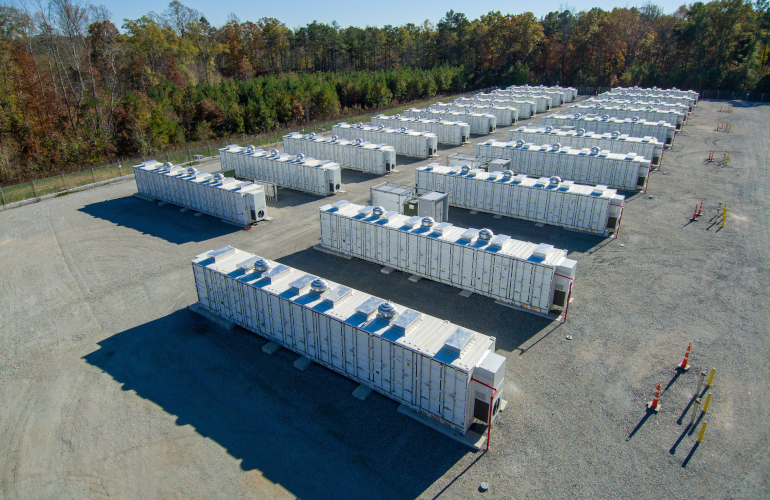Clean energy job wages 25% higher than national median, report finds
Clean energy jobs paid 25% more than the national median wage in 2019 and were more likely to include health care and retirement benefits, according to a first-of-its-kind analysis of federal occupational wage and benefits data prepared for E2 (Environmental Entrepreneurs), the American Council on Renewable Energy (ACORE) and the Clean Energy Leadership Institute (CELI) by BW Research Partnership.
The “Clean Jobs, Better Jobs” report is an analysis of wages and benefits across the clean energy sector. According to the report, workers in renewable energy, energy efficiency, grid modernization and storage, clean fuels and clean vehicles earned a median hourly wage of $23.89 in 2019 compared with the national median wage of $19.14. In addition, jobs in many clean energy sectors are more likely to be unionized and come with health care and retirement benefits than the rest of the private sector, the analysis shows.

McCarthy Building Co.
“This is just one more indication that focusing on clean energy is the smart thing to do as lawmakers look to rebuild our economy and get Americans back to work,” said Bob Keef, executive director at E2. “These jobs pay better, come with better benefits – and they’re also helping fight climate change and the growing economic costs that come with it. We need policies that ensure these good-paying jobs continue to grow and are available to every American in every state.
Clean Jobs, Better Jobs comes amid the growing national dialogue around clean energy as federal and state leaders look for ways to restart the economy. The findings underscore the opportunity to advance smart clean energy policies that create higher-wage opportunities putting Americans back to work quickly rebuilding a cleaner, more resilient and more equitable economy. The report also provides detailed wage, benefit, education and demographic data for 15 specific clean energy occupations, and how they compare with similar jobs in other industries outside of clean energy.
“More renewable energy means more high-quality jobs with good pay and better benefits for more Americans. Investing in these jobs is both smart for the economy and essential for the climate,” said Gregory Wetstone, president and CEO of ACORE. “With the right policies in place, the renewable industry can put people to work powering our nation’s economic recovery – as it did in 2009 – and play a critical role in achieving the greenhouse gas emissions reductions scientists say are necessary to avoid the worst impacts of climate change.”
Overall, median wages in clean energy are significantly higher than median wages in sectors such as retail, services, recreation and accommodations, especially when it comes to entry-level wages. Solar energy workers earn $24.48 an hour, while wind and grid modernization jobs pay on average more than $25 an hour. Energy efficiency — the largest employer in the nation’s energy sector — supports a median hourly wage of $24.44, about 28% above the national median.
“Emerging leaders know the future of energy is clean energy,” said Becca Ward, acting executive director of CELI. “This report illustrates that clean energy careers are already a critical part of the economy and the recovery from COVID-19. Now the essential work is to ensure that in the greater energy transition, these benefits and opportunities are centered in equity and the frontline communities most impacted by climate change, COVID-19, and ongoing racial injustices.”
Many clean energy jobs also paid better than fossil fuel jobs. Jobs in coal, natural gas and petroleum fuels paid $24.37 an hour, while solar and wind jobs combined for a $24.85 median hourly wage. Clean energy industries also employed about three times more workers than fossil fuels did in 2019, and, unlike fossil fuel jobs, clean energy jobs are available in every state, regardless of geology or geography.
Before the COVID-19 pandemic, clean energy had been one of the nation’s fastest-growing sectors. At the end of 2019, clean energy employed nearly 3.4 million workers across 99% of U.S. counties, according to E2’s Clean Jobs America report.
“The U.S. economy has shed millions of jobs since the onset of COVID-19,” said Phil Jordan, VP and principal at BW Research Partnership. “Clean energy investments can create new opportunities for these displaced workers, in jobs that pay more and are more likely to include benefits than the average jobs lost during the pandemic.”
State Findings
Clean energy industries in six states paid wages at least 20% higher than the statewide median, led by California (29.2%), Texas (27.6%) and Louisiana (24.9%). Six states plus Washington, D.C. had median hourly wages above $25 an hour in clean energy, led by Massachusetts ($29.80), D.C. ($27.60) and California ($27.50).
Other Report Findings
- The unionization rate across all clean energy occupations (9%) was slightly higher than the national private-sector average (6%)
- Common occupations — such as electrician, construction laborer, welder — typically pay a premium when they’re involved in clean energy industries. Electricians who work in clean energy, for instance, make a median $29.64 per hour – about $2.60 more per hour than electricians overall.
- Wage premiums for clean energy occupations are highest for entry-level positions.
For expanded findings, including detailed profiles on 15 specific clean energy occupations, download the full report here.
News item from E2
<!–
–>
Original Source: https://www.solarpowerworldonline.com/2020/10/clean-energy-job-wages-higher-than-national-median-report-finds/
















